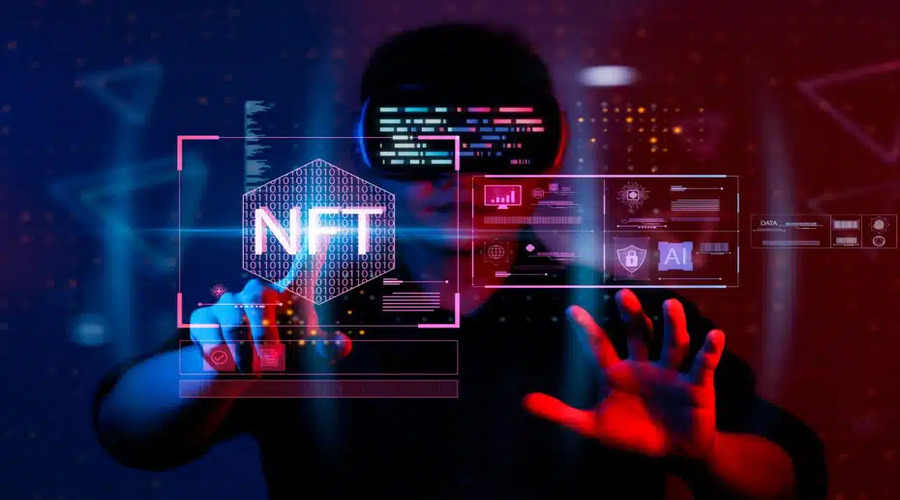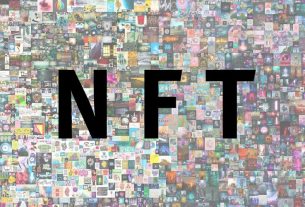NFTs have gained popularity in recent years as a way to tokenize digital assets. By creating a unique, verifiable token that represents ownership of a digital asset, NFTs provide a way to monetize and trade digital assets in a way that was previously difficult or impossible. In this article, we’ll explore the role of NFTs in tokenization, including their benefits and challenges.
What is Tokenization?
Tokenization is the process of creating a digital representation of a physical asset or financial instrument. Tokens are created on a blockchain, which provides a secure and decentralized way to verify ownership and transfer ownership of the asset.
There are several benefits to tokenization, including:
- Liquidity: Tokens can be traded on secondary markets, providing liquidity and making it easier for investors to buy and sell the asset.
- Fractional ownership: Tokens can be divided into smaller units, allowing for fractional ownership of the asset.
- Transparency: The blockchain provides a transparent and immutable record of ownership and transactions.
- Lower costs: Tokenization can reduce transaction costs by eliminating the need for intermediaries and streamlining the process of transferring ownership.
NFTs and Tokenization
NFTs are a type of token that represents ownership of a unique digital asset. Unlike fungible tokens, such as cryptocurrencies, NFTs are non-interchangeable and unique. Each NFT represents ownership of a specific digital asset, such as a piece of artwork, a collectible item, or a virtual real estate property.
NFTs provide several benefits for tokenization, including:
- Unique ownership: NFTs provide a way to verify ownership of a unique digital asset, such as a one-of-a-kind artwork or collectible item.
- Value transfer: NFTs provide a way to transfer ownership and value of a digital asset, allowing for monetization and trade.
- Verification: The blockchain provides a way to verify the authenticity and ownership of the digital asset, reducing the risk of fraud and counterfeiting.
- Flexibility: NFTs can be created for a wide range of digital assets, providing flexibility for tokenization.
NFTs and the Art Market
One of the most well-known uses of NFTs is in the art market. NFTs provide a way for artists to monetize their digital artwork, which was previously difficult to do. By creating an NFT that represents ownership of a digital artwork, artists can sell their artwork as a unique, one-of-a-kind asset.
NFTs also provide benefits for collectors and investors. Collectors can purchase NFTs that represent ownership of rare or unique digital artwork, and investors can trade these NFTs on secondary markets.
The use of NFTs in the art market has not been without controversy, however. Some critics argue that the high prices paid for NFTs are driven by hype and speculation, rather than the intrinsic value of the artwork. Others have raised concerns about the environmental impact of NFTs, as the energy consumption required for blockchain transactions can be significant.
NFTs and the Gaming Industry
NFTs also have the potential to revolutionize the gaming industry. By creating NFTs that represent ownership of in-game assets, such as virtual weapons or armor, game developers can create a new revenue stream and provide players with a way to monetize their in-game assets.
NFTs can also provide benefits for players. By creating an NFT that represents ownership of an in-game asset, players can sell that asset on a secondary market, providing a way to earn real-world money for their gaming efforts. NFTs can also provide a way to ensure the authenticity and rarity of in-game assets, making them more valuable to collectors.
However, there are also challenges to consider in the use of NFTs in the gaming industry.
Challenges and Limitations of NFTs in Tokenization
While NFTs offer many benefits for tokenization, there are also challenges and limitations to consider. Some of these include:
- High costs: Creating and trading NFTs can be expensive, particularly for smaller transactions. This can limit the accessibility of NFTs for some users and limit the potential for widespread adoption.
- Scalability: The current blockchain technology used for NFTs is not yet scalable enough to handle large-scale transactions. This limits the potential for NFTs to be used in industries with high transaction volumes, such as real estate.
- Legal and regulatory issues: There is currently a lack of clarity around the legal and regulatory framework for NFTs. This can create uncertainty for users and limit the potential for widespread adoption.
- Environmental concerns: The energy consumption required for blockchain transactions, including NFTs, has raised concerns about the environmental impact of the technology.
Potential Future Developments of NFTs in Tokenization
While NFTs are still a relatively new technology, there are already some potential future developments that could further enhance their use in tokenization.
Interoperability
One potential development is the ability to make NFTs interoperable with other blockchain technologies. This would allow for seamless transfer of ownership between different blockchains, increasing the flexibility and potential uses of NFTs.
Improved Scalability
Another area of development is scalability. As the demand for NFTs continues to grow, there will be a need for faster and more scalable blockchain solutions. This could be achieved through the use of layer 2 scaling solutions or the development of new blockchain technologies specifically designed for NFTs.
Standardization
Standardization of NFTs could also be an area of future development. Currently, there is no standard for NFTs, which can create confusion and limit interoperability. The development of a standard for NFTs could provide clarity and consistency, making it easier for users to create, trade, and manage NFTs.
Tokenization of Physical Assets
While NFTs are primarily used for the tokenization of digital assets, there is also potential for their use in the tokenization of physical assets. This could include assets such as real estate, fine art, or collectibles. By creating an NFT that represents ownership of a physical asset, tokenization could provide benefits such as increased liquidity, transparency, and fractional ownership.
Integration with DeFi
Finally, there is potential for the integration of NFTs with decentralized finance (DeFi) protocols. This could allow for the use of NFTs as collateral in lending and borrowing platforms, or the creation of NFT-based derivatives. The integration of NFTs with DeFi could further increase the utility and value of NFTs in tokenization.
Conclusion
NFTs have the potential to revolutionize the way we tokenize and trade digital assets. By providing a unique, verifiable token that represents ownership of a digital asset, NFTs offer a way to monetize and trade assets in a way that was previously difficult or impossible. NFTs have already found use in industries such as art and gaming, and are likely to find use in many other industries in the future.
However, there are also challenges and limitations to consider, including high costs, scalability issues, legal and regulatory issues, and environmental concerns. As the technology behind NFTs continues to evolve and the regulatory framework becomes clearer, we are likely to see wider adoption and more innovative uses of NFTs in tokenization.
I am a highly experienced and successful cryptocurrency author. I have been writing about cryptocurrencies for over 5 years and have seen the industry grow and change immensely. I am well-versed in all things crypto and blockchain, and it can be seen in my writings. My goal is to educate others about this fascinating industry, and to help them make informed investment decisions. I believe that cryptocurrencies are the future of finance, and I am eager to share my knowledge with as many people as possible.




